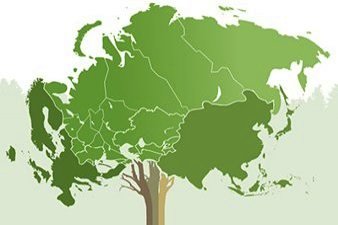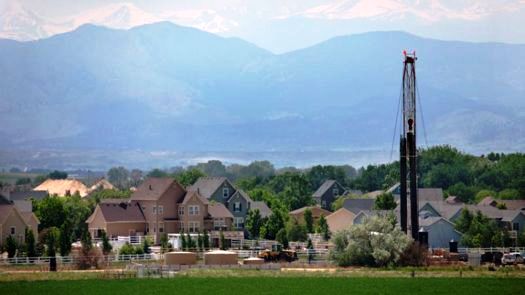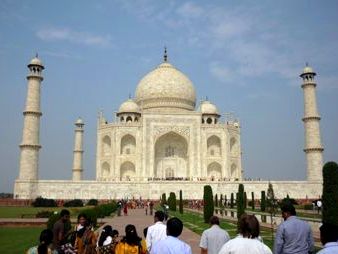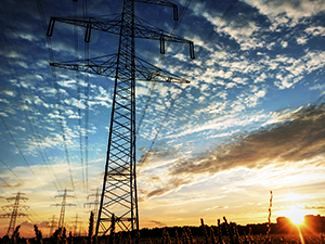 Washington – Having natural resources does not have to be a curse, it can be a blessing if the countries ensure proper management of revenues from natural resources, invest earnings in building up physical and human capital, and improve institutions, says the World Bank’s newly-released report, “Diversified Development: Making the Most of Natural Resources in Eurasia”. The report has been produced in partnership with the Eurasian Development Bank.
Washington – Having natural resources does not have to be a curse, it can be a blessing if the countries ensure proper management of revenues from natural resources, invest earnings in building up physical and human capital, and improve institutions, says the World Bank’s newly-released report, “Diversified Development: Making the Most of Natural Resources in Eurasia”. The report has been produced in partnership with the Eurasian Development Bank.
“The experience of resource-rich countries around the world shows that diversification of exports or production may be neither necessary nor sufficient for development,” said Laura Tuck, World Bank Vice President for Europe and Central Asia. “Our new report recommends that governments in the Eurasia region need to worry less about diversifying their exports or production, and think more about building diversified national asset portfolios – to ensure better balance between natural resources, built capital, and economic institutions.”
According to the report, Eurasia’s portfolios are currently heavy in tangible assets such as oil and gas, schools and hospitals, and in some cases; roads and railways. At the same time; they are lagging behind more successful countries in intangible assets such as education levels, quality of healthcare, and institutions for managing volatile resource rents, providing high-quality public services, and effectively regulating private enterprise.
“The main observation of the report is that diversified development is the result of successful development and not the cause of successful development,” said Hans Timmer, World Bank Chief Economist for Europe and Central Asia. “Successful countries will diversify in a natural way, as they diversify their assets and improve institutions. Forced diversification, for example by subsidizing new industries, if it is not consistent with the country’s endowments, will almost always fail as it usually results in economic inefficiency.”
The report studies economic development in the twelve countries of Eurasia, where six countries are rich in natural resources: Azerbaijan, Kazakhstan, Russia, Turkmenistan, Ukraine, and Uzbekistan, and the other six countries are not: Armenia, Belarus, Georgia, Kyrgyz Republic, Moldova, and Tajikistan. In the last two decades, natural resources have played a central role in the development of the whole region, as countries which are rich in natural resources grew their wealth and shared their prosperity with the rest of the region through trade, migration, investment or aid.
The report finds that the wealth of natural resources has served Eurasia well so far, helping improve the living standards for most of Eurasia’s 280 million people. Since 2000, individual incomes increased five-fold, and health and education services have improved. The most impressive achievement is the remarkable poverty reduction in the region, as poverty has fallen to half of what it was in the 1990s. All these improvements coincided with high and rising commodity prices.
“To address the challenge of high volatility caused by unstable commodity prices, the policymakers in Eurasia may wish to learn from the lessons of other resource-rich countries, both successful and unsuccessful,” said Ivailo Izvorski, World Bank Sector Manager for Economic Management and Poverty Reduction in Europe and Central Asia and a report co-author. “Our analysis shows that resource-rich countries that made early improvements in the quality of essential services and the regulation of private enterprise were more successful in controlling volatility and becoming sustained high-income economies.”
The report suggests that better economic institutions in all Eurasian countries could enhance the stability and reduce the volatility of public finances, improve education and infrastructure to make workers more productive, and strengthen the competition regimes to encourage private enterprise and entrepreneurship. Stabilization, education, and competition are identified as three priorities for the Eurasian countries for the next decade.
According to the report, success in overall development in resource-rich countries is directly linked to how successful countries are in converting their resource revenues into built capital, such as infrastructure and healthy and skilled population. The report recommends that both resource-rich and resource-poor countries in Eurasia may wish to make a big push to improve their infrastructure, such as roads and railways, pipelines, electricity grids, and communication networks. Generally, resource-poor countries in the region lag behind their richer neighbours in infrastructure, but they have been steadily increasing public investment and managed to boost their per capita physical capital by almost a third in 2010 relative to 2005. The countries where investment in physical capital could help the most are Russia and Ukraine.
For every other country in the region, the more urgent investment is in human capital, especially education. International assessments of the quality of education show that the region is lagging significantly. The report suggests that Eurasian resource-rich and resource-poor countries can benefit from both spending more and improving the efficiency of public spending in education.
Another important finding of the report is that integration into global markets is a key factor of success, as it helps create prosperity regardless of diversification. The report compares three sub-regions – East Asia, Central Europe, and Eurasia – and draws the conclusion that all of them succeeded by integrating into global markets using their comparative advantage: labor in East Asia, capital in Central Europe, and natural resources in Eurasia. Eurasia can do even better by expanding its trade with East Asia in addition to strengthening established links with Western Europe.
Click here to read/download the Full Report.
Source: The World Bank.


















